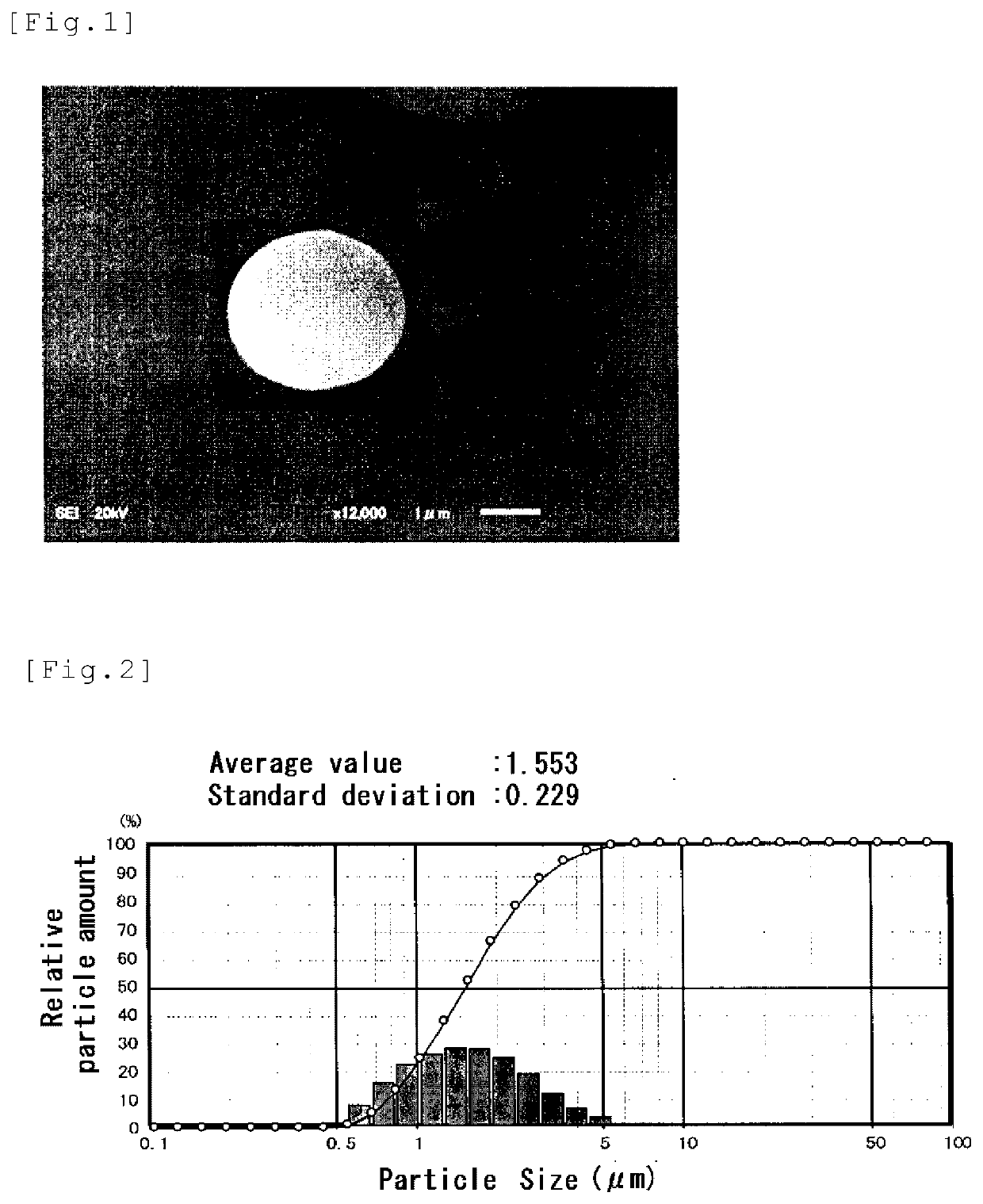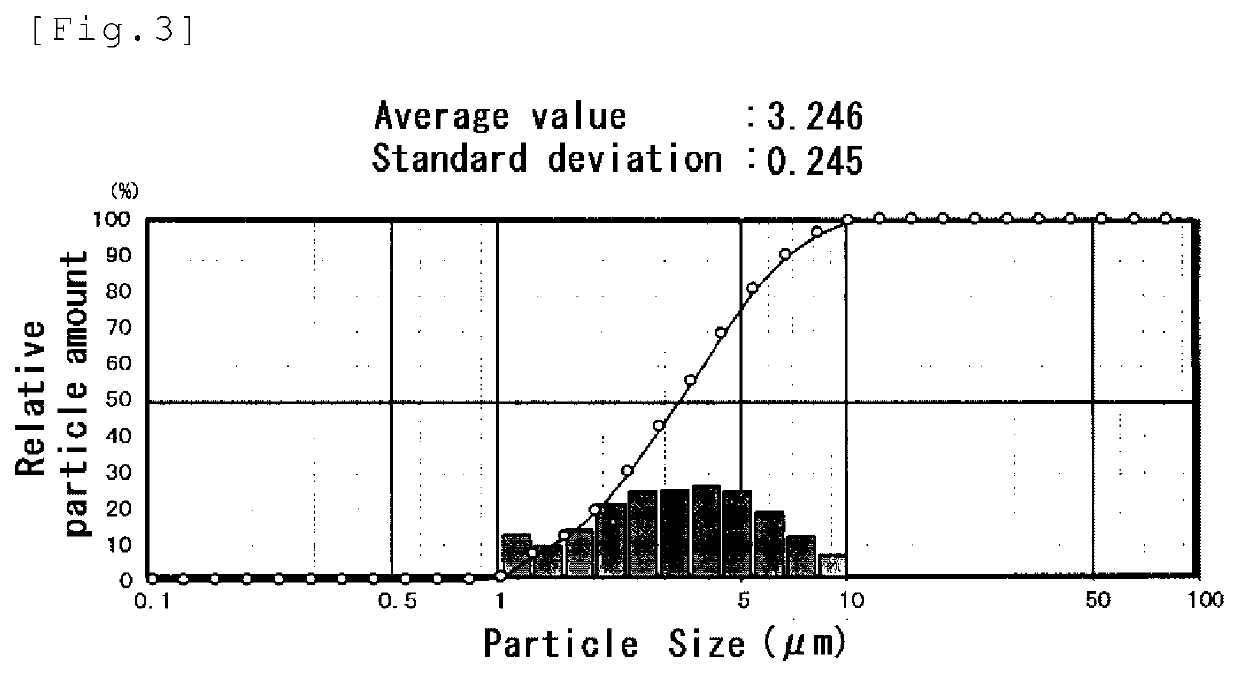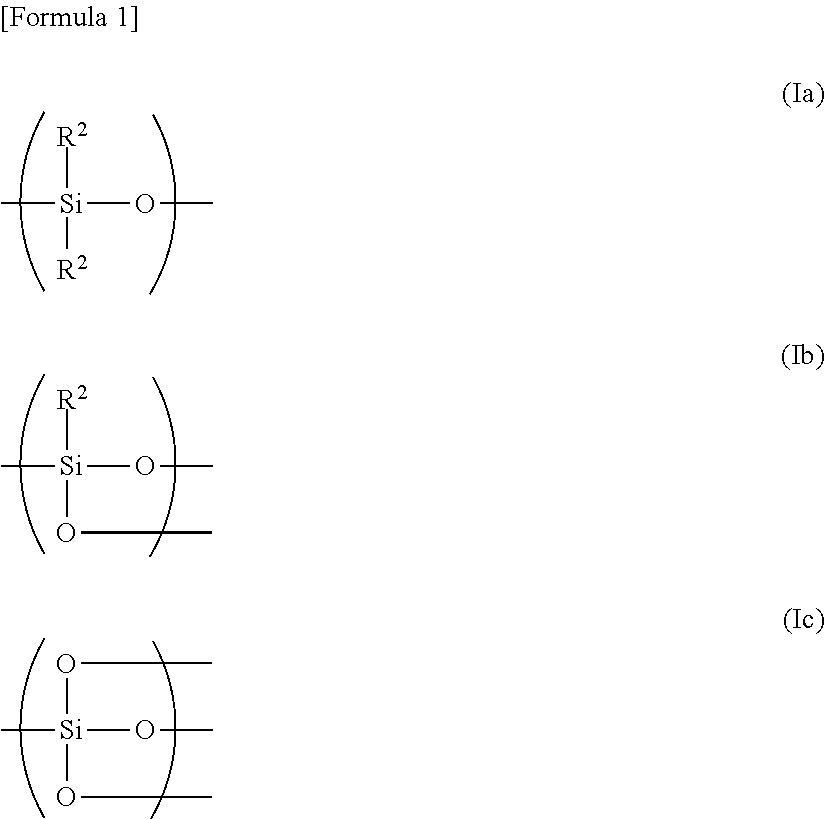A cosmetic substrate and a cosmetic containing the cosmetic substrate
a technology of cosmetic substrate and core material, which is applied in the direction of cosmetic preparations, medical preparations, make-up, etc., can solve the problems of excessive thickness of the wall, insufficient ability of the absorbent, and makeup float (white float) to occur, etc., to achieve excellent properties, less leaching of core material, and easy manufacturing
- Summary
- Abstract
- Description
- Claims
- Application Information
AI Technical Summary
Benefits of technology
Problems solved by technology
Method used
Image
Examples
production example 1
ydroxy-3-[3′-(trihydroxysilyl)propoxy]propyl]serine (Silylated Serine)
[0083]Into a 1 liter beaker, 30 g (0.285 mol) of serine and, then, 270 g of water were added. The resulting mixture was stirred and adjusted to pH9.2 by addition of 25% aqueous sodium hydroxide.
[0084]The resulting solution was warmed to 50° C. To the warmed solution, 3-glycidoxypropyltriethoxysilane [KBE-403 (trade name); manufactured by Shin-Etsu Chemical Co., Ltd.] 79.5 g (0.286 mol; equimolar amounts of serine) was added dropwise over about 2 hours with stirring and stirring was continued for 16 hours at 50° C. after completion of the addition. Thereafter, 17% aqueous hydrochloric acid was added to adjust to pH6.0 and the solution was stirred for 1 hour at 80° C. and then cooled to obtain 403.9 g of an aqueous solution of N-[2-hydroxy-3-(3′-trihydroxysilyl)propoxy]propyl]serine (silylated serine) having the solid concentration of 18.2%. The extent of the reaction calculated based on the amino nitrogen contents ...
production example 2
ydroxy-3-[3′-(trihydroxysilyl) propoxy]propyl]glycine
[0091]In the same manner as in production example 1 except for using glycine 30 g (0.4 mol) instead of serine and using 3-glycidoxypropyl triethoxysilane 111.2 g (0.4 mol, equimolar amounts of glycine), 432.7 g of an aqueous solution of N-[2-hydroxy-3-[3′-(trihydroxysilyl) propoxy]propyl]glycine (silylated glycine) having the solid concentration of 22.9% was obtained. The extent of the reaction calculated based on the amino nitrogen contents before and after the reaction was 62.2%. As the result, moles of N-[2-hydroxy-3-[3′-(trihydroxysilyl) propoxy]propyl]glycine was calculated and determined to be 0.23.
[0092]As a result of HPLC analysis under the same conditions as in production example 1, the peak of molecular weight of about 75 of glycine prior to reaction disappeared after the reaction, a peak was detected around 268 and it was confirmed that N-[2-hydroxy-3-[3′-(trihydroxysilyl) propoxy]propyl]glycine was produced.
production example 3
ydroxy-3-[3′-(trihydroxysilyl)propoxy]propyl]aspartic Acid (Silylated Aspartic Acid)
[0093]In the same manner as in production example 1 except for using aspartic acid 30 g (0.225 mol) instead of serine and using 3-glycidoxypropyl triethoxysilane 55.8 g (0.225 mol, equimolar amounts of aspartic acid), 365.8 g of solution of N-[2-hydroxy-3-[3′-(trihydroxysilyl) propoxy]propyl]aspartic acid (silylated aspartic acid) having the solid concentration of 17.4% was obtained. The extent of the reaction calculated based on the amino nitrogen contents before and after the reaction was 78%. As the result, moles of N-[2-hydroxy-3-[3′-(trihydroxysilyl)propoxy]propyl]aspartic acid was calculated and determined to be 0.15.
[0094]As a result of HPLC analysis under the same conditions as in production example 1, the peak of molecular weight of about 133 of aspartic acid prior to reaction disappeared after the reaction, a new peak was detected around 330 and it was confirmed that N-[2-hydroxy-3-[3′-(tri...
PUM
| Property | Measurement | Unit |
|---|---|---|
| mass % | aaaaa | aaaaa |
| hydrophilic | aaaaa | aaaaa |
| mass | aaaaa | aaaaa |
Abstract
Description
Claims
Application Information
 Login to View More
Login to View More - R&D
- Intellectual Property
- Life Sciences
- Materials
- Tech Scout
- Unparalleled Data Quality
- Higher Quality Content
- 60% Fewer Hallucinations
Browse by: Latest US Patents, China's latest patents, Technical Efficacy Thesaurus, Application Domain, Technology Topic, Popular Technical Reports.
© 2025 PatSnap. All rights reserved.Legal|Privacy policy|Modern Slavery Act Transparency Statement|Sitemap|About US| Contact US: help@patsnap.com



